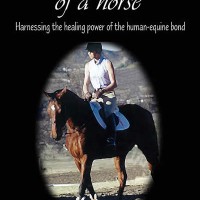Personality is one of the most common recipients of a multitude of behavioral attributions. More often than not, when the actions of another defy understanding, it is the “type of person that he/she is” that becomes the reasoning for these otherwise incomprehensible features of a person. Further, we even have specialized segments of personality that characterize behavior that exists outside of the “normal spectrum” of behavior. Some examples of this are “addictive personality”, “abusive personality” and “survivor personality.” And for each of these personality subtypes, behavioral traits are understood to be consistent for that subtype. However, as research into what separates those who seem to survive, and even thrive, in the face of extreme stress from those who are debilitated by it, the idea that a personality that is “biphasic” is more adaptive to stress has emerged.
So what is a biphasic personality, and what does it have to do with horses? Biphasic simply means the ability to have opposing behavioral traits housed in one person. A biphasic person can then be said to be both selfish and unselfish, generous and miserly, rigid and flexible, driven and lazy, and introverted and extroverted. For example, a biphasic person can be seen at times to be extremely selfless and generous toward others, yet at other times, be acting for self-motivated reasons. Of course, this type of behavior typically obfuscates logic, yet it is also extremely adaptive. The reason, of course, is that not every situation faced by people requires the same behavioral approach. To be sure, sometimes it pays off to be driven, and at other times, it is better to be patient, and yes, lazy. This is certainly the case during extreme stress.
And no animal knows better about dealing effectively with stress than a horse. A horse, after all, on a daily basis, lives through what in only one occurrence in humans constitutes PTSD. That is the very real threat of dying. This is an integral part of a horse’s nature, and not one easily erased by any amount of “structured” living environments. A horse, regardless of the situation, is still a flight animal, and one that holds concern for his/her life as the utmost priority. Yet horses can adapt to these life threatening circumstances in ways that do not mimic PTSD. If this were not the case, we wouldn’t see them performing in horse shows, riding in airplanes, traveling in horse trailers, and allowing themselves to be ridden. After all, we must not forget that a human animal sits on exactly the same spot that prey animal attacks. And further, this human sitting on the horse not only prevents escape, but actually controls the horse.
But interestingly, in watching horses’ behavior, it is very biphasic. For example, a horse can perform almost electrically, exploding over a course of jumps, or thundering down the track, and then, moments later, be extremely calm. Or, the same horse that is a dominant herd member can also be very nurturing with a young foal — this in fact, describes the typical “alpha mare”.
Humans on the other hand are not so biphasic, especially during times of stress. We will remain extremely activated and on alert weeks, even months after a stressful event. And, prior research on adopted child who came from neglectful or abusive situations, yet were then adopted into nurturing homes, shows that when experiencing overwhelming stress, they revert back to the same maladaptive behaviors that were first displayed with their early abusive caregivers.
Yet it is the ability to respond in ways that are flexible that separate those who survive extreme stress well, and we include horses here, from those who do not. A survivor can then be said to have a biphasic personality that does not always conform to rigid standards, but instead adapts to the needs of the situation, and responds in ways that produce the most effective result, which also restores a state of calm — just like a horse charging away from a predator, then a few moments later complacently munching grass.
Best,
Claire Dorotik LMFT
